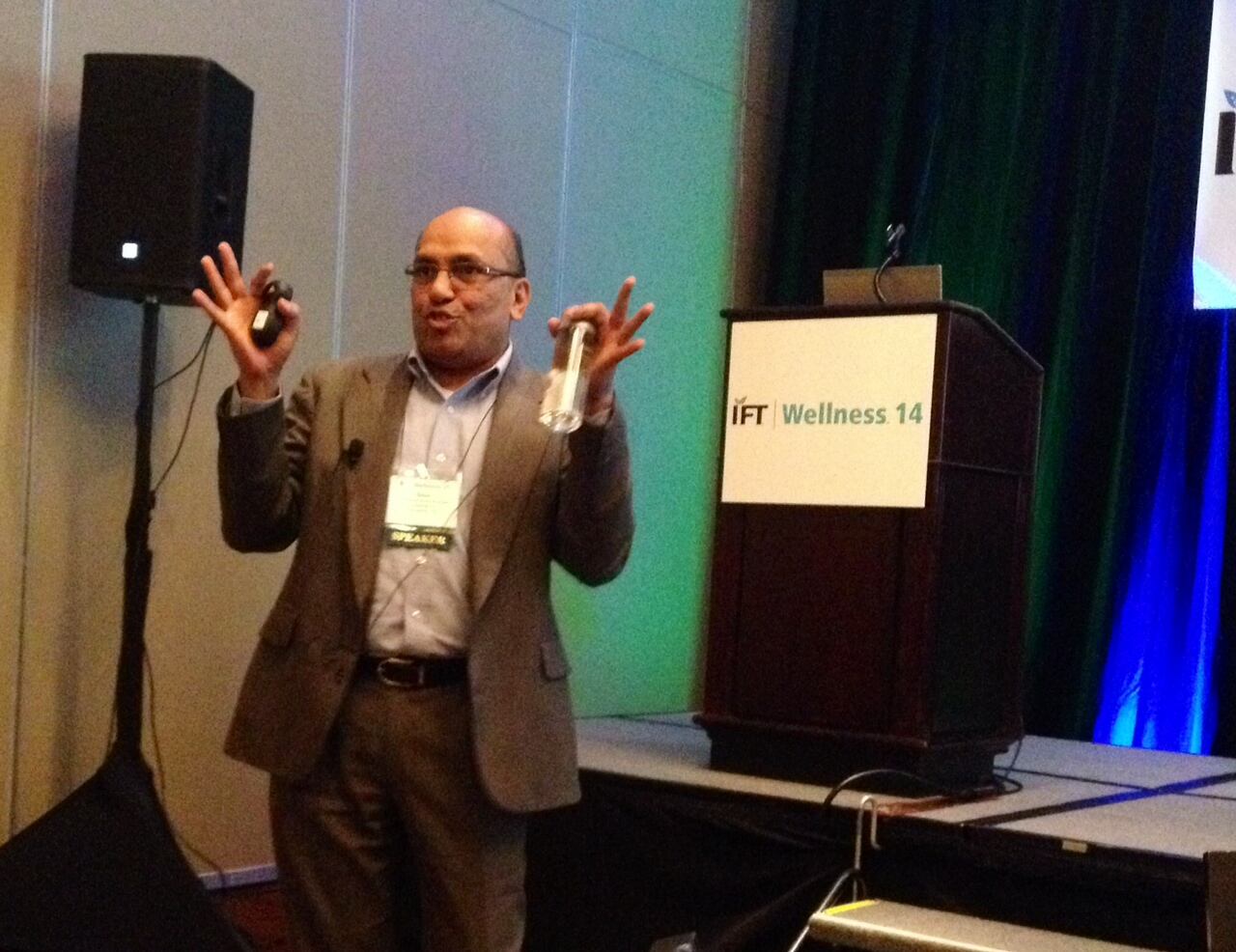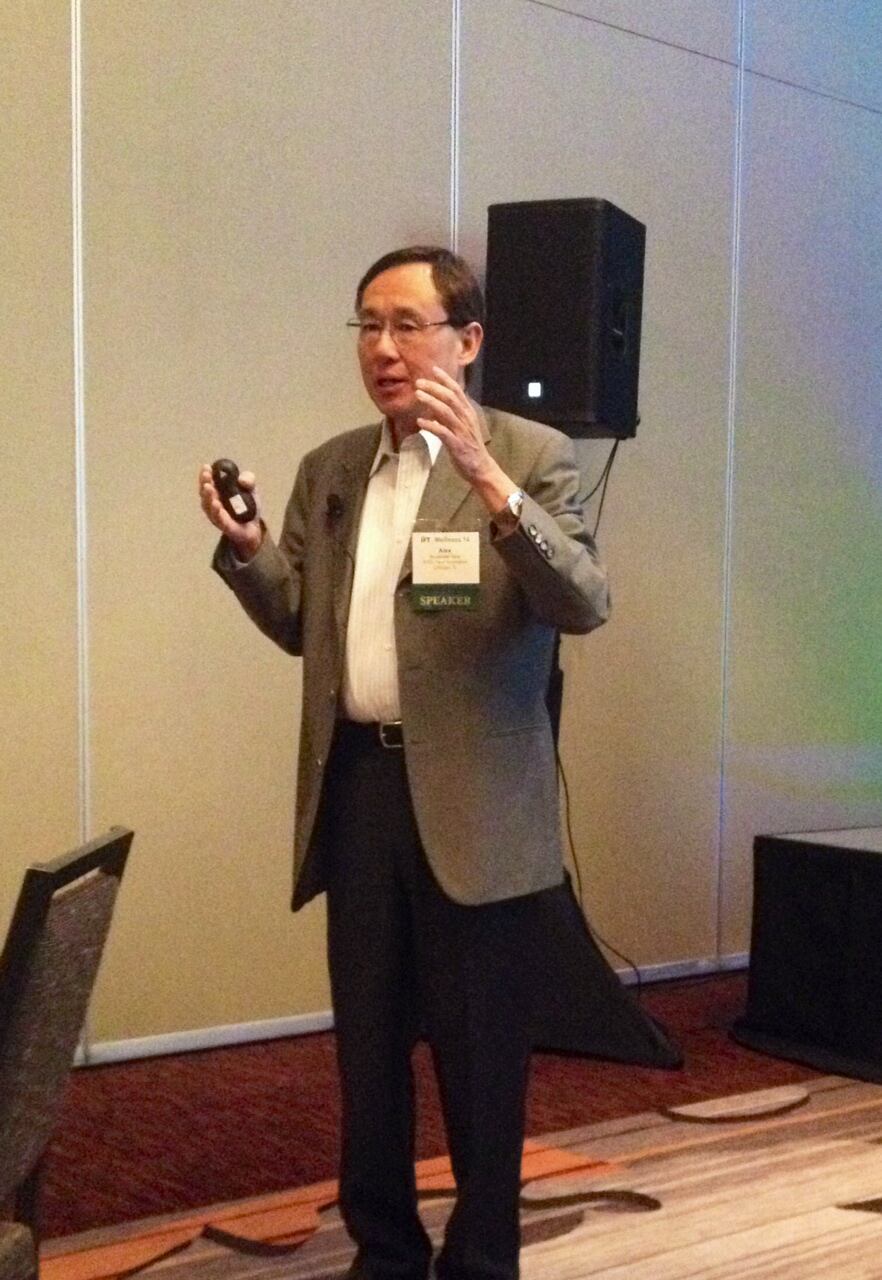The World Health Organization saw fit this month to lower its recommended daily sugar intake from 10% to 5% of total daily calories, which will likely impact sugar recommendations in the 2015 Dietary Guideline updates. The FDA’s proposed Nutrition Label update includes a line for added sugars. And the American Heart Association’s new guidelines call for women to limit added sugars to 100 calories per day, 150 for men—far less than a full-sugar sweetened 12-ounce soft drink per day.
“Not a single state in the country has obesity prevalence of less than one in five,” Brad Meyers, sales director, Midwest region at Naturex, told IFT Wellness attendees. “Why? A lot of theories are pointing to sugar consumption in soft drinks. Whether or not it’s fair to blame the sugar industry, that’s the world we are operating in.”
A lot of products make it to market; if they don’t taste good, consumers won’t buy them again
Still another common theme raised by the presenters, particularly as it relates to any sweetened food or beverage, is the importance of taste.
“Taste is number one metric by far that matters to consumers,” Meyers said, citing data from a NutraSweet survey. “When asked what’s the most important thing in choosing a product, 53% say taste. Nine percent say type of sweetener. Taste is the only thing that matters. A lot of products make it to market. People will buy it once; if doesn’t taste good, they won’t buy it again.”
So what’s a food processor to do?
Srini Subramanian, director of business development, Firmenich Inc., said that beyond low-level reductions (up to 25%, mainly for calorie reduction and more attractive labels), many turn to natural or artificial high-intensity sweeteners, though taste has long been the main problem (not to mention bulking and mouthfeel, which won’t be addressed in detail here).
“You can put your brand loyalty at risk if you’re looking for only a sweetener replacement and you miss out on the key taste attributes,” he said, noting that high-intensity sweeteners aren’t always the best option for that reason. “The number one reason for not liking them is unpleasant taste/aftertaste.”

The ‘gold standard’ taste experience of regular old sugar
The taste problem owes largely to the “gold standard” bell curve-shaped taste experience we’re accustomed to when eating products sweetened with sugar, which hits the palate early and doesn’t linger. “The profile we are used to is bell-shaped curve of sucrose,” Subramanian said, noting that the solution for most is to find the right ingredient (or combination) to replicate that curve.
“Glucose is similar, though less intense. Fructose, or fruit sugar, has a quicker rise and steeper curve. But when you get into the high-intensity sweeteners, the profile really drags. Time in seconds is about a minute for typical sugar; for HIS, it drags further,with glycyrrhizin being the worst at close to two minutes.”
Certain artificial blends, like aspartame and acesulfame-K, have proven effective sugar replacement blends. But they've come under fire as consumers are ditching unfamiliar sounding ingredients for more natural-sounding alternatives.
Avoiding the Whole Foods ‘naughty’ list
As Rachel Cheatham, PhD, CEO and president of FoodScape Group, pointed out, Whole Foods’ list of unacceptable ingredients for food contains a number of artificial and natural sweeteners in the F&B manufacturer’s regular toolbox: ace-K, aspartame, saccharin, high-fructose corn syrup and sucralose. (Acceptable sweeteners include erythritol, maltitol, stevia, monk fruit, honey, sugar and agave.)
“Whole Foods took it upon themselves to [create this list],” Dr. Cheatham said. “So if you want to get your food in there, you can’t have these ingredients. It’s arguably as important as an industry list. I’ve had a number of companies asking about it.”
Still, several presenters pointed out their alarm in fielding recent manufacturer requests to remove seemingly innocuous ingredients like ascorbic acid (vitamin C) from labels for appearing too chemical. One audience member even raised concern about labeling erythritol, asking, “Won’t consumers think it sounds like a chemical, too?”
Stevia is still king
The natural sugar substitute stevia remains the industry standard, featured in 266 new product launches since 2005 (84 last year alone), according to Mintel. And yet, its temporal profile presents some challenges—its sweetness comes in later than sugar and sticks on palate longer. At higher concentrations, stevia is often bitter, making it difficult to use in beverages.
Naturex found that combining SG95 stevia (typically used in beverages) with a low dose of the GRAS sweetener protein thaumetine (marketed as Talin), improved stevia’s flavor by reducing its astringency and bitter aftertaste, Meyers said. “In this case, Talin isn’t providing sweetness; it’s being used to change the sweet taste of stevia.”
Subramanian says the solution is a complex mixture of sweeteners and flavor technologies, such as botanicals (tea extract, citrus), flavors with modifying properties (developed with receptor based discovery), and non-volatile taste and tactile components.
Perhaps the next solution, Meyers said, is in finding the next stevia. One contender could be fruit and vegetable powders—a combination of juice and pulp that’s been dried.
“These haven’t been tested much,” he said, adding that they can impart possibly unwanted flavors and colors to products. “They do carry natural sugar with them, but they have the benefits of natural positioning and added nutrition. With a highly concentrated dried fruit and vegetable, with no carrier, you only need eight to 15 grams to say there is a whole piece of fruit or vegetable in the product. You can add the equivalent of two sugar packets in the product and still say there is a whole fruit or vegetable in there.”

Taste physiology of today is the food ingredient of tomorrow
Maybe the solution to sugar reduction can’t be found in an ingredient, but in the very physiology of taste. Alex Woo, managing director and founder of W20 Food Innovation, challenged attendees to use cross-modal correspondence to increase the perception of sweetness.
“Only recently neuroscientists have figured out that there is talking between our five senses. So how can you use the other senses to enhance sweetness? Some methods require you to add something, some you don’t add anything. It’s magic.”
One way is to capitalize on the interaction between retronasal olfaction and gustation. Given the role of aroma in taste perception, food scientists can employ phantom (below detection threshold) or congruent flavors (above the detection threshold) to enhance perceived sweetness, using aromas consumers inherently or through past association find sweet, such as strawberries or vanilla (in Western culture).
Trigeminal (hot/cold) perception also plays a key role in perceived sweetness, Woo said, noting that carbonation is a trigeminal pain agent, meaning it can reduce sweetness perception and make artificial high potency sweeteners taste more like sugar. “Test C02 levels if you’re working on a carbonated beverage,” he said. “There’s a reason why orange soda is lower carbonated than cola. Because C02 has an effect on sweetness.”
On sight, Woo noted the role of shape symbolism in human expectations. “Round food is associated with sweetness,” He said, noting that a lot of things in nature—apples, oranges, etc—tend to be sweet. “In sensory panels, the same chocolate, full sugar, if you mold it round vs square and triangle and ask people to taste it, they always say the round will taste sweetest.” Similar results were recorded when panelists simply gazed at a round object while tasting something.
He added that the color of the surrounding environment (red is sweeter) and even the sound of food packaging can exert profound effect on flavor perception. “These are interesting ways you can reduce sugar without adding anything—it’s all neuroscience. So it’s also clean label,” he said.
“Am I losing you yet?” he added with a laugh.
